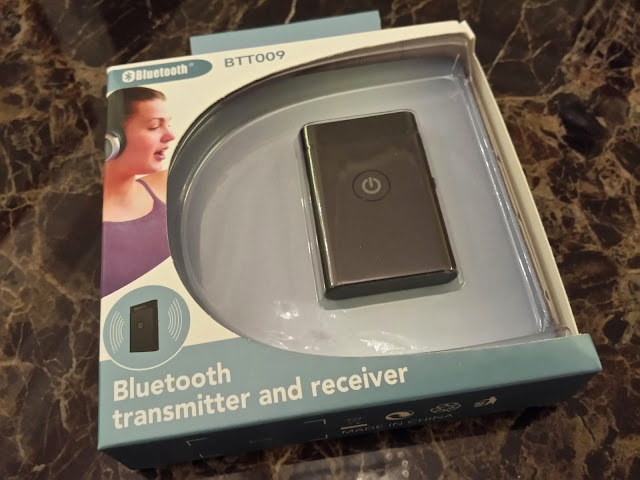Wednesday 18 December 2013
My watch is smarter than yours - why Pebble got my vote
Wednesday 9 October 2013
Tidy up that messy wiring!
Thursday 3 October 2013
Wireless Transmitter + Receiver BTT009
It is a Sunday night, big football game at 11pm. You are watching the game with great excitement, but you need to be considerate, as your wife and kids are asleep. You wish you could turn on the volume a bit louder...
Well that happened to me, and I have decided to fix it - with a Bluetooth Transmitter! The idea is simple, output the audio from the TV to your headphone wirelessly.
They used to come in a set, a wireless transmitter and a dedicated headphone. These days however, some of us may already have a BT earphone or headphone, so why not make full use of it?
Being me, I was not ready to pay much for it, so I started the search on Aliexpress, Ebay, and Amazon. Finally punched in my credit card details for this no brand BT transmitter (model BTT009) which also work as a receiver.
Nothing special with its packaging, and I suspect it needs a good outer box to protect the device from damaging during shipping. It comes with the transmitter itself, a micro USB cable to power the device, and a 3.5 to 3.5 mm cable to connect between the transmitter and the source (e.g. a TV).
The size of the transmitter is rather small, it's length is about a third of a pen. Making it very portable, which mean you can convert a media player or a earphone that has no BT capability. For that matter, this device comes with built-in battery. The transmitter has a solid build. Though it is brandless, it doesn't feel cheap.
Pairing it is easy. Set the devices, both the transmitter and headphone, in pairing mode (by long pressing the power button), bring them near physically, and they should pair.
Not much comment about the audio quality really. The sound passes through a few interfaces before reaching your ears, so don't expect it to be of very high quality. Doesn't mean it is bad though. Jon Champion still sound like Jon Champion. There is no noise or distortion.
Now excuse me, I am going back to watch my game **putting on the BT headphone**.
"GOAL!"
"SHUT UP!!!"
"......"
Wednesday 2 October 2013
External battery that actually look sexy - Anker Astro Slim 3
Saturday 14 September 2013
Review of MINIX NT-1
Please refer to my earlier post re: packaging, design, and my first impression of the headphone.
Let's start with specification. As many reviewers would say, specs only tell half the story, what matter is the actual experience with the headset.
MINIX NT-1
|
Plantronics BackBeat Go 2
|
||
Release Year
|
2013
|
2012
|
2013
|
NFC
|
Yes
|
No
|
No
|
Bluetooth Version
|
Bluetooth
V3.0+EDR
HSP, HFP, A2DP and AVRCP
|
Bluetooth 2.1
EDR
A2DP, AVRCP, HFP,
HSP
Apt-X
|
Bluetooth 2.1
EDR
A2DP, AVRCP, HFP,
HSP
Apt-X, SBC
codec
|
Operating
Range
|
10 meters (33
feet)
|
10 meters (33
feet)
|
10 meters (33
feet)
|
Driver Unit
|
40mm
|
34mm
|
6mm
|
Impedance
|
32Ω + 15%
|
32Ω
|
32Ω
|
Frequency Range
|
20-20KHz
|
18 – 22KHz
|
20-20KHz
|
Sensitivity
|
93 +/- 3db
|
102 dB
|
104 dB
|
Battery
|
320 mAh
|
240 mAh
|
?
|
Operating
Time
|
10 hours
|
9 hours
|
4.5 hours
|
Standby Time
|
Up to 250
hours
|
?
|
240 hours
|
Wednesday 11 September 2013
First impression of MINIX NT-1
I was pleasantly surprised soon, after using the device for some time, and more importantly I was impressed with the support channels available (from a smaller scale company).
I won't call myself a fan just yet, but few months after owning X5, I found myself getting another 3 MINIX products. That say a lot about building good reputation, especially for startup companies, to retain customers.

































